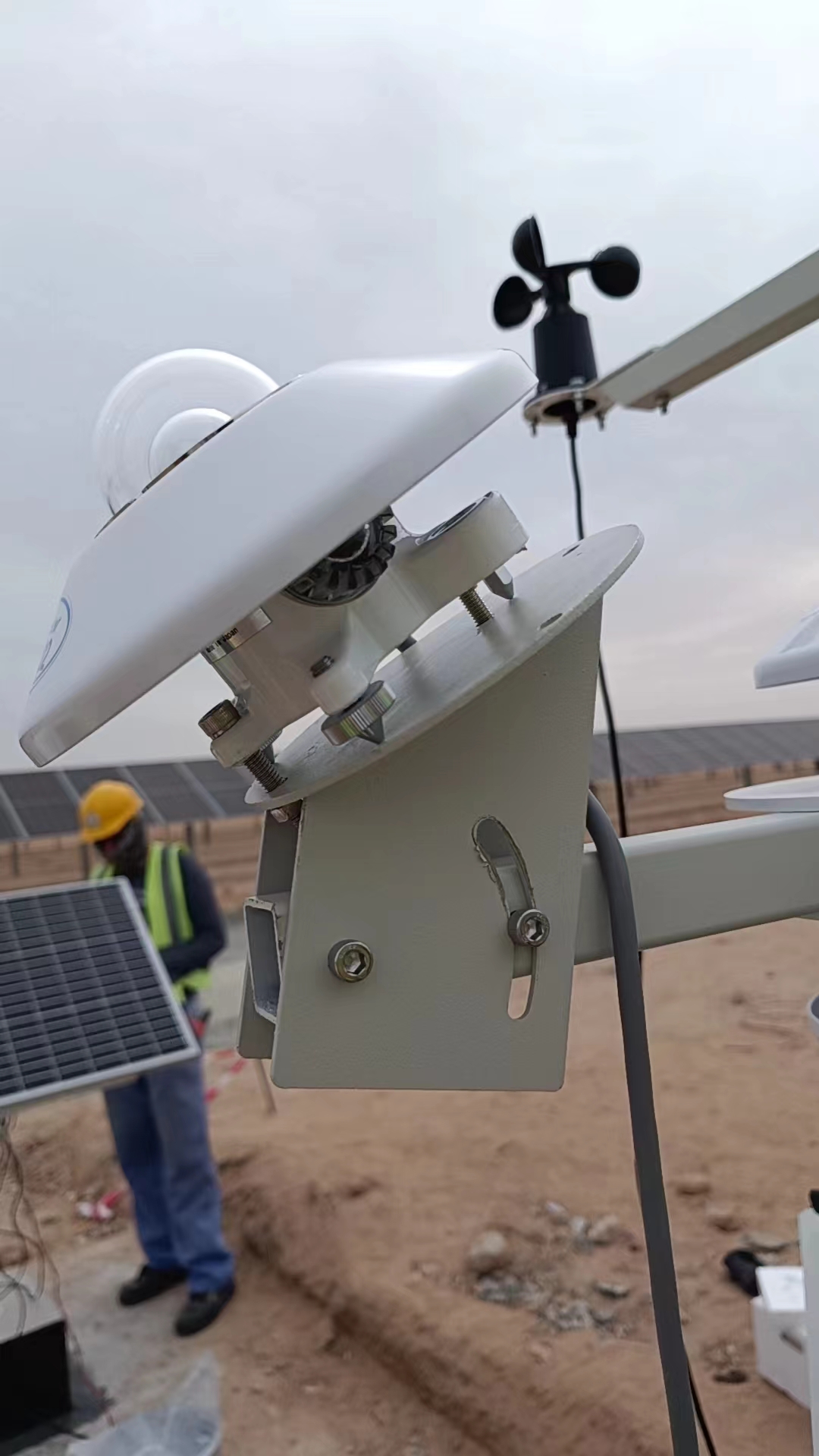Tsoomfwv Indian tsis ntev los no tau tshaj tawm kev teeb tsa lub hnub ci hluav taws xob sensors hauv ntau lub nroog loj thoob plaws lub tebchaws, txhawm rau txhim kho kev saib xyuas thiab tswj cov khoom siv hnub ci thiab txhawb kev txhim kho ntxiv ntawm lub zog tauj dua tshiab. Qhov kev pib no yog ib feem tseem ceeb ntawm Is Nrias teb txoj kev npaj kom ua tiav cov hom phiaj kev loj hlob ruaj khov (SDGs) thiab txo qis carbon emissions.
Raws li ib lub teb chaws uas muaj cov khoom siv hnub ci nplua nuj nyob hauv lub ntiaj teb, Is Nrias teb tau ua kom muaj kev vam meej hauv kev tsim hluav taws xob hnub ci hauv xyoo tas los no. Txawm li cas los xij, kev ua tau zoo thiab kev ruaj ntseg ntawm lub hnub ci hluav taws xob feem ntau vam khom qhov tseeb ntawm lub hnub ci hluav taws xob. Txog rau qhov kawg no, Indian Ministry of New and Renewable Energy (MNRE) tau koom ua ke tsim lub hnub ci hluav taws xob hluav taws xob sensor teeb tsa qhov project nrog ntau lub koom haum tshawb fawb thiab kev lag luam.
Lub hom phiaj tseem ceeb ntawm qhov project muaj xws li:
1. Txhim kho qhov tseeb ntawm kev ntsuam xyuas cov khoom siv hnub ci:
Los ntawm kev txhim kho high-precision hnub ci hluav taws xob sensors, cov ntaub ntawv ntawm lub hnub ci hluav taws xob tiag tiag tuaj yeem tau txais los muab lub hauv paus txhim khu kev qha rau kev npaj thiab tsim cov haujlwm tsim hluav taws xob hnub ci.
2. Optimize hnub ci zog tsim efficiency:
Siv cov ntaub ntawv sau los ntawm cov sensors los saib xyuas kev ua haujlwm ntawm cov chaw nres tsheb hnub ci hauv lub sijhawm, kho cov tswv yim tsim hluav taws xob hauv lub sijhawm, thiab txhim kho lub zog tsim hluav taws xob.
3. Txhawb txoj cai tsim thiab kev tshawb fawb tshawb fawb:
Muab cov ntaub ntawv txhawb nqa rau tsoomfwv los tsim cov cai txuas ntxiv hluav taws xob thiab cov chaw tshawb fawb tshawb fawb los ua cov kev tshawb fawb ntsig txog.
Tam sim no, kev teeb tsa lub hnub ci hluav taws xob sensors tau ua nyob rau hauv lub nroog loj xws li Delhi, Mumbai, Bangalore, Chennai, thiab Hyderabad. Cov nroog no tau raug xaiv los ua thawj qhov chaw tsav tsheb feem ntau vim tias lawv muaj peev xwm txhim kho tau zoo thiab xav tau kev tsim hluav taws xob hnub ci.
Hauv Delhi, cov sensors tau nruab rau ntawm lub ru tsev ntawm ntau lub hnub ci hluav taws xob thiab cov chaw tshawb fawb tshawb fawb. Tsoom Fwv Nroog Delhi tau hais tias cov sensors no yuav pab lawv nkag siab zoo txog kev faib cov khoom siv hnub ci hauv zos thiab tsim cov phiaj xwm hauv nroog ntau dua.
Mumbai tau xaiv los nruab sensors ntawm qee lub tsev lag luam loj thiab cov chaw pej xeem. Mumbai Tsoom Fwv Saib Xyuas Kev Ncaj Ncees tau hais tias qhov kev txav no yuav tsis yog tsuas yog pab txhim kho kev tsim hluav taws xob hnub ci xwb, tab sis kuj tseem muab cov tswv yim tshiab rau kev txuag hluav taws xob hauv nroog thiab txo qis emissions.
Qhov project tau txais kev txhawb nqa los ntawm ntau lub tuam txhab thev naus laus zis thoob ntiaj teb thiab hauv tsev. Piv txwv li, Honde Technology Co., LTD., lub tuam txhab suav hnub ci thev naus laus zis, tau muab cov cuab yeej siv thev naus laus zis thiab cov ntaub ntawv txheeb xyuas kev txhawb nqa.
Ib tus neeg saib xyuas ntawm Honde Technology Co., LTD. tau hais tias: "Peb txaus siab ua haujlwm nrog tsoomfwv Indian thiab cov chaw tshawb fawb tshawb fawb los txhawb kev siv lub hnub ci zoo.
Tsoomfwv Indian npaj yuav nthuav dav kev teeb tsa lub hnub ci hluav taws xob sensors rau ntau lub nroog thiab cov chaw nyob deb nroog thoob plaws tebchaws nyob rau ob peb xyoos tom ntej no. Nyob rau tib lub sijhawm, tsoomfwv tseem npaj yuav tsim cov ntaub ntawv hnub ci hauv lub tebchaws los koom ua ke cov ntaub ntawv sau los ntawm cov sensors hauv ntau qhov chaw los txhawb kev tsim hluav taws xob hnub ci hauv lub tebchaws.
Tus Minister of New thiab Renewable Energy tau hais tias: "Lub hnub ci zog yog tus yuam sij rau Is Nrias teb kev hloov pauv hluav taws xob thiab kev txhim kho kom ruaj khov. Los ntawm txoj haujlwm no, peb cia siab tias yuav txhim kho cov txiaj ntsig ntawm hnub ci zog ntxiv thiab txhawb kev txhim kho ntawm Is Nrias teb lub zog tauj dua tshiab."
Lub hnub ci hluav taws xob hluav taws xob sensor teeb tsa qhov project yog ib kauj ruam tseem ceeb rau Is Nrias teb hauv thaj chaw ntawm lub zog tauj dua tshiab. Los ntawm qhov tseeb hnub ci hluav taws xob saib xyuas thiab kev tshuaj xyuas cov ntaub ntawv, Is Nrias teb yuav tsum ua kom muaj txiaj ntsig ntau dua hauv kev tsim hluav taws xob hnub ci thiab pab txhawb rau lub ntiaj teb kev siv zog los tawm tsam kev hloov pauv huab cua thiab ua tiav kev txhim kho kom ruaj khov.
Post lub sij hawm: Jan-08-2025


